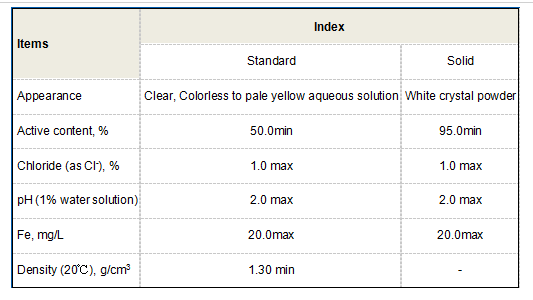Exploring the Potential of PBTC Phosphonate in Modern Chemical Applications
Understanding PBTC Phosphonates A Vital Component in Water Treatment and Beyond
Phosphonates, particularly those derived from PBTC (Phosphonobutane Tricarboxylic Acid), represent an important class of chemicals widely used in various industries, most notably in water treatment applications. As global concerns over water quality continue to rise, the significance of phosphonates like PBTC takes center stage in ensuring effective water management and environmental sustainability.
What are PBTC Phosphonates?
PBTC phosphonates are organophosphorus compounds that are distinguished by their chemical structure, which includes a phosphonic acid group bonded to a butane backbone with three carboxylic acid groups. This unique structure allows PBTC to act as a chelating agent, effectively binding with metals and preventing scale deposition in water systems. This characteristic makes it a preferred choice in many water-based applications, including cooling towers, boilers, and reverse osmosis systems.
Role in Water Treatment
In water treatment, PBTC phosphonates play a crucial role in controlling scale formation and corrosion. Scale deposits can reduce the efficiency of heat exchangers and other equipment, leading to increased energy consumption and operational costs. By inhibiting the precipitation of calcium carbonate and other scale-forming minerals, PBTC phosphonates help maintain thermal efficiency and prolong the lifespan of equipment.
Moreover, PBTC phosphonates possess excellent stability across a wide range of pH levels, allowing them to function effectively in diverse operational environments. Their ability to remain effective under varying conditions makes them indispensable in chemical formulations aimed at improving water quality and system efficiency.
Environmental Considerations
pbtc phosphonate

With growing awareness around environmental issues, the use of PBTC phosphonates is often considered in the context of sustainability. Unlike traditional phosphates, which can contribute to eutrophication—a process that leads to harmful algal blooms in aquatic systems—PBTC phosphonates are regarded as more environmentally friendly. They offer a reduced risk of contributing to nutrient pollution while still providing effective treatment solutions.
The biodegradability of PBTC compounds has been a topic of research and discussion. Many studies are underway to assess their long-term environmental impact, focusing on persistent organic pollutants and their degradation products. These efforts are essential in developing safe and sustainable water treatment practices.
Applications Beyond Water Treatment
Though the primary use of PBTC phosphonates lies in water treatment, their applications extend to other sectors. In the oil and gas industry, for example, they are utilized as scale inhibitors in extraction processes. Their ability to control mineral scaling translates to more efficient operations and lower maintenance costs in these demanding environments.
Additionally, the electronics industry has also started to explore the use of PBTC phosphonates in etching and cleaning processes, where the control of mineral deposits is critical for maintaining precision and quality.
Conclusion
In conclusion, PBTC phosphonates are a vital component in modern water treatment solutions and beyond. Their unique chemical structure allows for effective scale inhibition and corrosion control, which is crucial for maintaining the efficiency of water systems and supporting industrial applications. As industries continue to seek sustainable and eco-friendly alternatives, the role of PBTC phosphonates as a safer option compared to traditional phosphates positions them as a focal point for future research and development. Embracing these innovative compounds not only addresses modern challenges in water management but also contributes to a greener, more sustainable future.
-
Water Treatment with Flocculant Water TreatmentNewsJun.12,2025
-
Polymaleic AnhydrideNewsJun.12,2025
-
Polyaspartic AcidNewsJun.12,2025
-
Enhance Industrial Processes with IsothiazolinonesNewsJun.12,2025
-
Enhance Industrial Processes with PBTCA SolutionsNewsJun.12,2025
-
Dodecyldimethylbenzylammonium Chloride SolutionsNewsJun.12,2025





